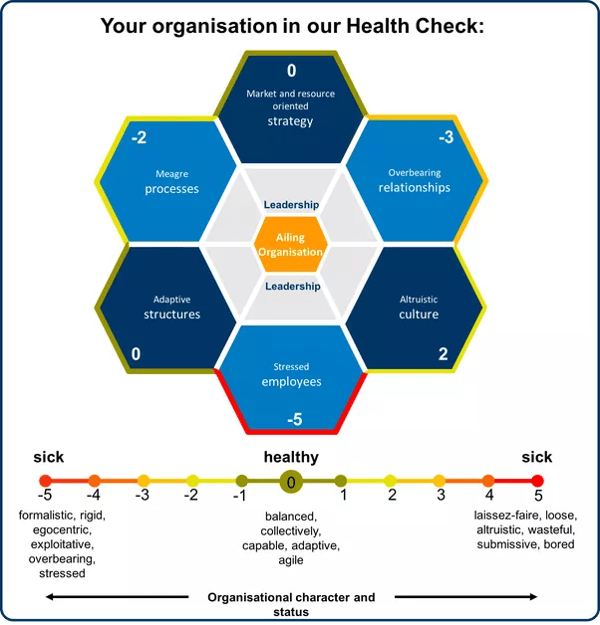Agile transformation (part 2) - analysis of the status quo
How the analysis of the current maturity level of the organization creates a solid foundation for a successful, agile transformation
A thorough analysis is the basis for insights and viable approaches to developing organisations. Transformation processes are sometimes successful (or unsuccessful) because the initial situation has been explored beforehand.
In the last article I explained the sense of an agile transformation. Topics such as knowledge transfer, cross-functional teams and agile processes are becoming more and more important.
In order to successfully shape an agile transformation and stay on the ball in the market, an analysis of the status quo is required.
Which areas should be analyzed?
"Non-structural factors such as agile working methods are becoming increasingly important," explains Fabrice Roghé, one of the authors of the study "Boosting Performance Through Organizational Design".
However, the introduction of agile working methods, for example through scrum teams, sprints and stand-up meetings, is often not sufficient. "The anchoring of agile principles in organization and personnel processes, such as leadership models, resource allocation or performance management, makes the biggest difference," explains Roghé.
Which dimensions are important here?
Executives are the key figures of every company and therefore represent a central system element which needs to be analysed. It is crucial to recognize, focus and promote the individual potentials and strengths of each executive in order to achieve an extraordinary performance in the team and to unfold overall organizational potentials.
Employees are the starting point for all activities within the company. They create the essential added value. The stocktaking process focuses on whether employees fit together and the organization, whether they are healthy and committed, whether they increase productivity and their innovative strength.
Relationships describe the way in which communication takes place within the organisation and at the interfaces to the outside world. It evaluates the extent to which relationships are characterised by cooperation, mutual trust and support, commitment and positive representation of the company.
A good community culture is characterised by basic assumptions about valid behaviours, guidelines and their visible manifestations on a daily basis. Subcultures (learning, error, communication culture) shape the overall culture.
Structures form the architecture of the organization. They provide the structure and process organization and enable - in accordance with strategy and culture - value creation. It is important to determine the extent to which the organizational structures are characterized by a high degree of adaptability and, through their structure, permit customer-oriented thinking, feeling and action, speed and intelligent decisions by employees.
Processes describe procedures and procedures for given and previously defined business transactions. Agile processes should neither be too bloated nor too lean, but should be distinguishable between controllable-mechanical and lively-dynamic environmental conditions.
Strategies are based on the mission statement, in which the future vision, meaning and purpose of the organisation and its values are described. The analysis shows whether the strategies on the way to achieving the vision of the future ensure the sense and survival of the organisation.
The degree to which the existing corporate strategy balances the organisation's responsibility towards employees, customers, society and the environment must also be taken into account.
Fig. 1: Ailing organization (Kallenbach 2016, p. 79)
Which analytical instruments are useful?
From the multitude of different analysis tools, holistic instruments are recommended that understand and analyze the entire organization as an adaptive system.
GO Health Check
This instrument provides you with an initial assessment of how "healthy" your company is today. It determines the maturity level of your organisation. Thus you receive clues and impulses, how far you are on the way to a "healthy organization" (link).
Furthermore, you will learn where the strengths of your organisation lie and in which areas your largest development areas are.
Gallup Q12
The so-called Gallup Q12® survey shows how high the emotional bond between employees* and companies is. The survey asks employees* twelve questions that are closely related to the workplace and the working environment.
The more questions that tend to be answered positively here, the higher the employee's commitment to the company and thus also the employee's commitment, since the workplace is considered attractive. The result can also be used to assess the degree of leadership quality.
Focus interviews as an opportunity for in-depth study
After quantitative analysis using questionnaires, focus interviews are a good way of gaining a better understanding of the data obtained from the survey and testing initial hypotheses. These focus interviews can be conducted with different people. The aim is to obtain as broad a spectrum of perspectives as possible.
Conclusion
Every agile transformation begins with the analysis of the status quo. The dimensions of leadership, employees, relationships, culture, structures, processes and strategy are significant indicators. The results form a solid basis for starting an agile transformation towards a healthy, responsive organization.
If you would like to learn more about "Agile Transformation", Healthy Organization or the GO Health Check©, then you are welcome to inform yourself about our services in this area or simply contact us.
Outlook
In part 3 of the series "Agile Transformation" you will learn which basic requirements from our experience are necessary for a successful agile transformation.
Further blog posts from the series "Agile transformation":
Agile transformation (part 1) - classic vs. agile
Agile transformation (part 3) - three relevant premises
Agile transformation (part 4) - designing a roadmap
Agile transformation (part 5) - setting up a pilot project
Agile transformation (part 6) - methods and instruments
Agile transformation (part 7) - step on it!
Agile transformation (part 8) - questions and answers
Literature:
Kallenbach, Ingo (2016): Leading in the Healthy Organization. Exceptional performance through potential development. Stuttgart: Schäffer-Poeschel

